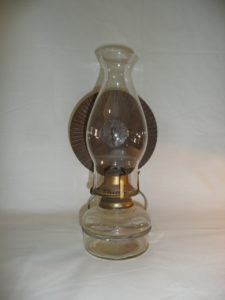
The Life and Times of Bert Simpson
-
An excerpt from an autobiography written in Tauranga in 1996 by Bertie Simpson. His parents were Taotaoroa farmers William and Julia Simpson who were involved in the Duke of Cambridge Lodge and the Methodist Church in Cambridge.
I was born in Cambridge at Mrs Murphy’s nursing home on 14 March 1916. I had one brother, George, who was nearly five years older than me.
At that time, my father had a farm on the Taotaoroa hills some nine miles from Cambridge in the direction of Matamata. The farm at Taotaoroa was a sheep and cattle farm some 600 acres in size. Dad did quite a bit of cropping in the way of growing swedes for winter feed. He would take the two of us over the farm with him on a large sledge with two or more large draught horses. Dad had a fox terrier which always went with us as well as his working dog. The terrier was for hunting out rabbits, but the poor little dog got roped in for other jobs at times. When Dad was working down a paddock for swedes with the tine harrows, there was a small piece broken off one of the sections. My brother used to harness up the dog and make him pull this little piece around alongside Dad with the horse drawn set.
Dad made up a trolley for my brother out of badly worn landwheels off the ploughs that he used, but there were none available when I wanted a trolley. Instead, Dad made some wheels out of a reasonably round branch and used small branches for axles. There were plenty of hills around so we had no end of fun with our carts.
The rabbits were a real problem and from time to time Dad got trappers in. I can remember seeing piles of rabbit carcasses as high as the fence. Skins were worth a shilling to one shilling and threepence each so George and I used to trap some to get a little pocket money. The skins were stretched over a wire to dry out. My father wire netted the two front paddocks to keep the rabbits out, but it was not 100% successful as they burrowed under the fence.
The school at Karapiro was about 4½ miles away so it was quite a job for a little fellow to get to and fro each day. George rode on a horse and a lot of the time I was the back seat passenger, but during the milking season I went in a light wagon.
A number of farmers, including my dad, milked six or eight cows by hand, separated the milk and sent a small can of cream to the factory just near the school. The eldest daughter of a neighbour close by used to drive the two horses in the wagon, pick up cans of cream on the way, deliver them to the factory and then go to school. I’m not sure how things worked out for coming home because several of us used to walk home at times. We used to take a short cut over a hill and sometimes we would see a cloud of dust on the main road. We knew it was Mr Alford a neighbour who lived beyond Dad’s farm. He was the only one in the district who owned a car. We hurried to get back on the road because we knew we could get a ride.
Sometimes I had a problem when I got to the road gate when I came home on my own. The few cows that Dad milked were grazed in two of the front paddocks and one big spotted cow with long curled horns didn’t like me around. Once I got inside the gate, down she came, so I had to get through the fence and go through another paddock. One day, Mum had the cows in the yard and was milking one in the shed. My spotty friend was standing in the corner, but as soon as she saw me, she put her beady eye on me. To get to Mum I had to go the full length of the shed, so I plucked up courage and made a dash. Spotty had other ideas and she pinned me against the wall with her two big horns around me. A scream brough Mum onto the scene and all was well.

Kerosene Hand Lamp Ref 293
We had no electric power in those days and our water was tank supply with water caught off the roof of the house. Cooking was done on a coal range which also heated the hot water. My brother and I used to have our bath in a tin bath placed in front of the coal range. Kerosene lamps and candles were our source of light. There was a plenteous supply of ti tree on the farm so that provided all our heating, etc.
We used to collect our mail from a small building about a half mile down the road. Miss Nora Bruce used to deliver the mail to farms up to that point in her gig, but those living beyond had a box number in this building and we would collect it from there.
It was probably in 1921-22 when Dad was ill with the bad flu that was going around at that time. He had to bring a load of ti tree from the back of the farm and while doing that he got wet through with the result he developed pneumonia. In those days there were no drugs and Dad spent just on four months in the Waikato Hospital and he was in a very weak state when he came home. Mum’s father persuaded Dad to sell the farm, so that ended our life in the Taotoaroa hills.
Published in the Cambridge Historical Society Newsletter – December 2022.
